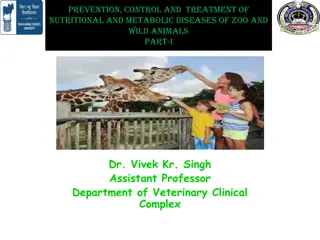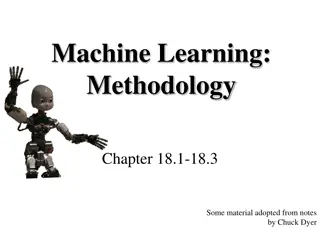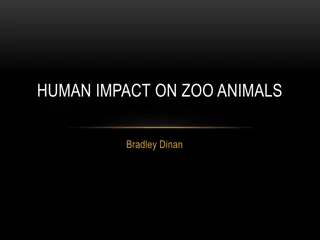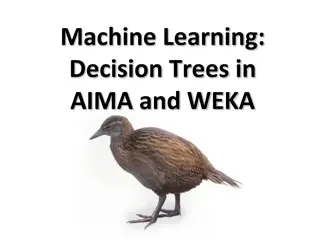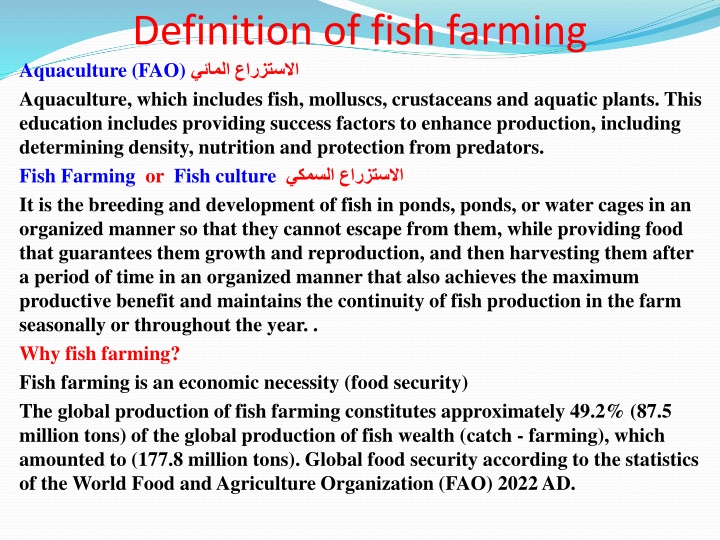
Overview of Fish Farming and its Significance in Aquaculture
Fish farming, a vital practice in aquaculture, involves breeding and cultivating fish in controlled environments for economic, social, and recreational purposes. It ensures food security, provides employment opportunities, and offers benefits such as controlled growth rates and production. Fish are categorized based on their habitat and feeding habits, including freshwater, seawater, and brackish water species. This sustainable practice plays a pivotal role in global food security and economic stability.
Download Presentation

Please find below an Image/Link to download the presentation.
The content on the website is provided AS IS for your information and personal use only. It may not be sold, licensed, or shared on other websites without obtaining consent from the author. If you encounter any issues during the download, it is possible that the publisher has removed the file from their server.
You are allowed to download the files provided on this website for personal or commercial use, subject to the condition that they are used lawfully. All files are the property of their respective owners.
The content on the website is provided AS IS for your information and personal use only. It may not be sold, licensed, or shared on other websites without obtaining consent from the author.
E N D
Presentation Transcript
Definition of fish farming Aquaculture (FAO) Aquaculture, which includes fish, molluscs, crustaceans and aquatic plants. This education includes providing success factors to enhance production, including determining density, nutrition and protection from predators. Fish Farming or Fish culture It is the breeding and development of fish in ponds, ponds, or water cages in an organized manner so that they cannot escape from them, while providing food that guarantees them growth and reproduction, and then harvesting them after a period of time in an organized manner that also achieves the maximum productive benefit and maintains the continuity of fish production in the farm seasonally or throughout the year. . Why fish farming? Fish farming is an economic necessity (food security) The global production of fish farming constitutes approximately 49.2% (87.5 million tons) of the global production of fish wealth (catch - farming), which amounted to (177.8 million tons). Global food security according to the statistics of the World Food and Agriculture Organization (FAO) 2022 AD.
Fish farming is a social necessity (social security) The fish farming sector provides 20.5 million people (35%) of the total number of jobs provided by the fisheries sector in general in the world (58.5 million people), while the capture fisheries sector provides 65% of the jobs (38 million people). Most of these people are in Asia (according to statistics Food and Agriculture Organization 2022 AD). Fish farming for entertainment and decoration It is no secret to many that there are fish raised in decorative ponds in gardens and inside the homes of some social circles as a form of luxury and enjoyment. Advantages of fish farming -Fish farms can provide fresh fish at any time -Controlling fish density in farms and then controlling production -Fish farms can provide the desired fish -The possibility of controlling the growth rates of fish in farms and then providing fish of different sizes -To suit the different segments of consumers according to their social status and income levels. -Securing healthy fish, while fish in their natural environment may be exposed to industrial and other pollutants, which may affect the quality and safety of fish for human consumption.
Division of fish Fish can be divided according to the characteristics of their environment and their food habits as follows Division according to the type of water in which the fish live 1- Freshwater fish (river) Freshwater Fishes Such as the Nile tilapia, Oreochromis niloticus, carp and catfish 2- Seawater (marine water) Fishes Like sharks and fish of the emperor family (emperors) or feeling Groupers & Sea bass, grouper fish, and sea wolves. Family: Lethrinidae Serranidae Family: and fish family of whiting Family: Carangidae (Jack): 3- Seawater & Freshwater Fishes It is the one that lives in the seas and oceans, then during the breeding period it migrates at the mouths of rivers such as Eel or vice versa lamprey that lives in fresh water then in season Mating migrates to the seas where the water is salty 4- Brackish water fish (estuaries) It is the one that lives in fresh water, but it can tolerate and live in low temperatures. Salinity such as some species of the family Cichlidae such as the blue tilapia Oreochromis aureus, Oreochromis spilurus, and Mozambican tilapia. Oreochromis mossambicus, as well as some fishes of the Poeciliidae family, such as the fish The sailfish, Poecilia latipinna, and the fanfish, Poecilia reticulate
Oreochromis aureus Oreochromis niloticus Oreochromis mossambicus Oreochromis spilurus
Poecilia reticulate Poecilia latipinna Division according to the water temperature in which the fish live 1- Warm water fish Such as tilapia, carp, and catfish 2- Cold water fish Like trout and salmon
Classification according to the type of food preferred by the fish (nature of feeding) 1- Carnivorous fish It prefers animal foods such as catfish (In culture, diets must be prepared based on animal-source ingredients, not less than 70%). 2- Herbivorous fishes She prefers plant foods (plants, herbs, and grasses) (In culture, diets based on plant-based ingredients should be prepared, with at least 70% of them) 3- Omnivorous Fishes Mixed feeding fish It is the one that feeds on animal and plant food, such as some types of tilapia and carp
Types of cultured fish Although there are many types of fish in nature, there are very few of them Which is suitable for cultivation and education .... Why???????? Raising fish in a controlled environment may be considered a form of captivity or forced life, to which many fish may not respond. 1- Not growing well 2- It does not multiply easily 3- Do not accept artificial relationships Characteristics of fish farming The fish that must be selected for farming must have characteristics and advantages that make them unfit for this purpose, namely: 1- Fish are accepted for living and breeding in a limited place, such as ponds, ponds, or floating cages 2- The growth rate of fish is not affected by its presence in an environment other than its natural environment 3- The cultured fish should be characterized by fast growth 4- To have the ability to feed on manufactured diets and to have a high feed conversion factor 5- The cultured fish should be characterized by ease of spawning 6- The cultured fish should have good disease resistance 7- The fish should be one of the preferred types of consumers to ensure a successful marketing process 8- The fish for culture should be available locally 9- It is possible to bring in locally unknown species and adapt them to local conditions within a well-studied process




